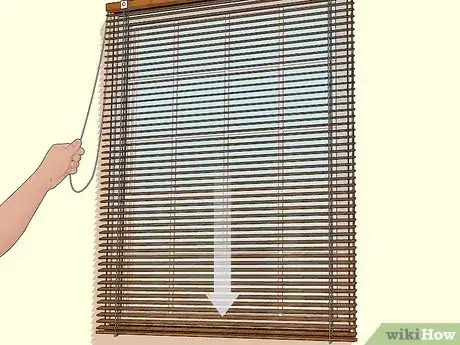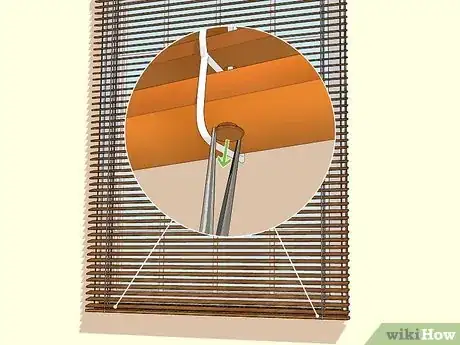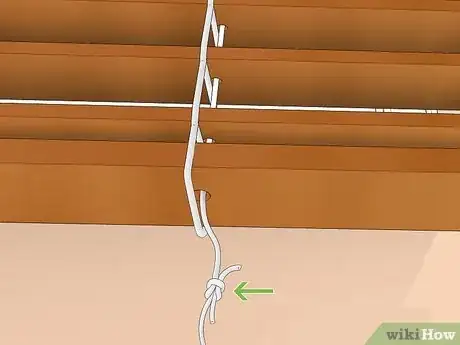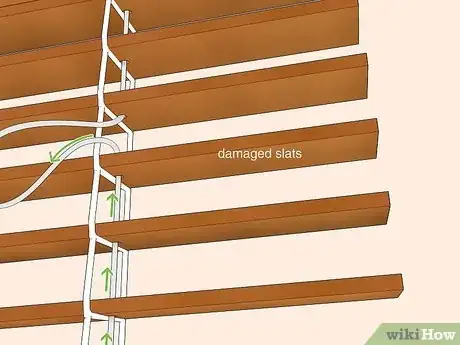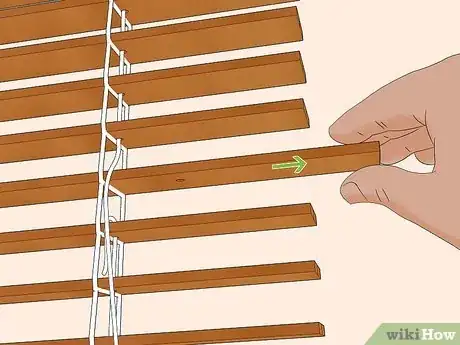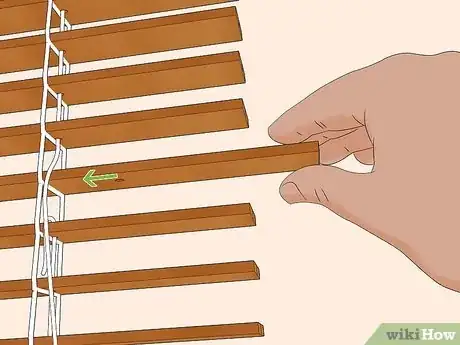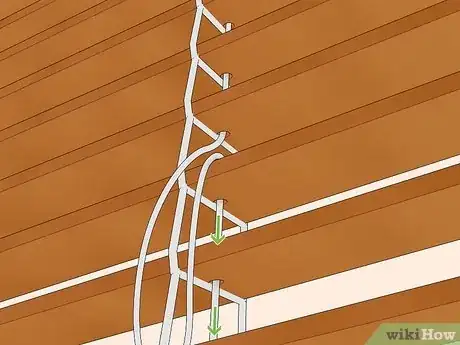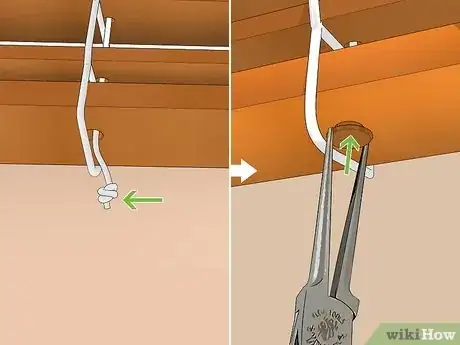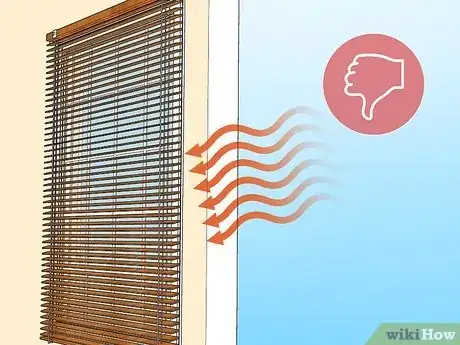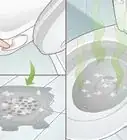This article was co-authored by wikiHow staff writer, Madeleine Flamiano. Madeleine Flamiano is an Editing Fellow at wikiHow based in Berkeley, California, as well as a Team Organizer, Copy Editor, and Movie Critic for Incluvie. Madeleine has 12 years of experience in literacy advocacy and the creative arts that span tutoring, teaching, writing, public relations, and non-profit support. She has penned seven novels under a pseudonym and loves all escapist genres, from cozy fantasies to hard-boiled sci-fi. Her professional path started at NaNoWriMo, where she scripted and hosted a series on worldbuilding. Madeleine graduated from Mills College with a B.A. in English with a concentration in Literature and a Minor in Philosophy.
There are 9 references cited in this article, which can be found at the bottom of the page.
This article has been viewed 1,725 times.
Learn more...
Are you looking to fix bent faux wood blinds so they look good as new? If you have faux wood blinds in your home, you probably love their natural aesthetic. However, once one slat is bent, it can be a bit of an eye sore. Don't worry! We'll walk you through the process of replacing a bent slat in a few minutes with a pair of pliers. Read on for a fast DIY solution to restore faux wood blinds.
Steps
Lower your blinds.
-
Pull your blinds down so it’s easier to find the broken slat. Gently tug on the pull-string of your blinds. Pull 1 of the pull-string’s cords to even out the blinds so they’re not crooked and the other cord to lower the blinds until they stop at the bottom of your window.[1] X Research source
- To close horizontal blinds that don't have a pull string, hold onto the bottom of the blinds and slowly pull them down.
Take off the bevels at the bottom of the blinds.
-
Pull out 2 plastic bevels so you can adjust the blinds’ threading. To find the bevels, look for 2 circles that look like buttons—they’ll be at the bottom of the blinds. Remove the bevels with a pair of needle nose pliers. Pinch the corner of each bevel with the tips of the pliers. Then, pull off the bevels.[2] X Research source
- When you remove a bevel, you'll loosen the threading that's behind it. Once the thread has more slack, you can tug on it to reposition your blind’s slats.
Knot the extra threading and the blind’s lines together.
-
Secure the thread and lines so you can pull on them to adjust a slat. Connect the extra threading and the strings between the slats together by tying their tail-ends into a knot. When the threading has slack but the lines stay in place, you’ll be able to pull on both and reposition slats without all the blinds falling down.[3] X Research source
Remove the lines from the bent slat and every slat beneath it.
-
Loosen the slats up to the broken one so you can move the broken slat. Unravel the lines that you previously tied to the loosened thread. Now that the lines aren’t secured, pull out all the lines from the slits of the damaged slat as well as from every slat beneath it.[4] X Research source
Remove the bent or broken wooden slat.
-
Take off the slat you don’t want so it doesn’t warp your other slats. Once you’ve removed any strings that originally secured the slat to the blinds, pull it off. Be careful as you remove it so you don't accidentally bend other slats. [5] X Research source
Replace a damaged slat with a new one.
-
Blinds comes with 2-3 replacement slats, so swap a bent slat with one. Look at the bottom of the blinds and you'll find 2-3 extra slats. Pick up the last slat and undo the knots beneath it. Pull the lines out of the slat’s slits and pull off the slat. Position the slat in the empty space where the broken one was.[6] X Research source
- Make sure all the slits in the new slat are lined up with the slits from the slats beneath it.
Feed the lines back into the empty slits in the slats.
-
Slip the lines back into the slats to reattach them to your blinds. Carefully feed the lines you previously moved into the slits of the slats you loosened. Start with the slits in the replacement slat and end with the slat at the very bottom of the blinds.[7] X Research source
Clip the lines and loose thread back onto the bevels.
-
Connect the lines and thread to the bevels to secure your blinds. Once you've pulled all the lines and threads down, push them both into the holes at the bottom of your blinds. Plug the holes with the blinds' bevels.[8] X Research source
- When the bevels are put back in their original position, the lines will be secure and your blinds will be fully repaired.
Avoid exposing your slats to heat or too much pressure.
-
High temperatures can warp slats, while stress may break or bend them. Install faux wood blinds on a window that doesn't get a lot of sunlight—faux wood is made of thermoplastic and can warp in temperatures above 55 °F (13 °C). Try not to pull your blinds down too hard or knock anything against faux wood slats, since they might bend or crack.[9] X Research source
- Faux wood blinds are great for rooms with high humidity, like your bathroom, since they withstand moisture.
Other wikiHows

 How to Relieve & Prevent Headaches & Migraines Fast
How to Relieve & Prevent Headaches & Migraines Fast
 Best Ways to Unclog a Toilet
Best Ways to Unclog a Toilet

 How to Take a Screenshot on a Windows PC: 8 Simple Tricks
How to Take a Screenshot on a Windows PC: 8 Simple Tricks

 How to Take Care of Potted Orchids
How to Take Care of Potted Orchids

References
- ↑ https://www.wcmanet.org/how-to-close-window-blinds/
- ↑ https://youtu.be/XSLn7v9cCKg?t=199
- ↑ https://youtu.be/G6j7hGbdBSU?t=240
- ↑ https://youtu.be/nfEGJXSlfVw?t=172
- ↑ https://youtu.be/Ejfoc80BM54?t=87
- ↑ https://youtu.be/Ejfoc80BM54?t=9
- ↑ https://youtu.be/ZlKdtMEYTo8?t=87
- ↑ https://youtu.be/ZlKdtMEYTo8?t=106
- ↑ https://www.lifestyledaily.co.uk/article/2021/05/29/pros-and-cons-installing-faux-wood-blinds
About This Article

